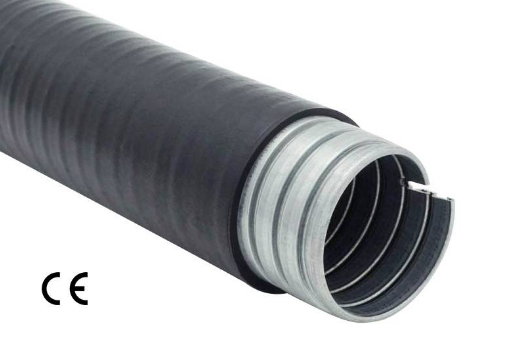Mar. 18, 2024
Stainless steel metal corrugated conduits are essential components in various industrial and commercial applications where protection and routing of electrical cables and wires are required. These conduits offer durability, flexibility, and resistance to corrosion, making them ideal for challenging environments. Understanding the different connection methods for these conduits is crucial for ensuring efficient and reliable installations.
Threaded Connections
Threaded connections are one of the most common methods used to join stainless steel metal corrugated conduits. This method involves screwing the threaded end of one conduit into the threaded end of another. Typically, these conduits come with standard NPT (National Pipe Thread) threads, allowing for compatibility with various fittings and connectors.
To create a secure threaded connection, it's important to ensure proper alignment and tightness between the conduits. This prevents leakage and maintains the integrity of the conduit system. Additionally, using thread sealants or tape can help enhance the seal and prevent loosening over time.

Compression Fittings
Compression fittings provide a reliable and leak-proof connection method for stainless steel metal corrugated conduits. These fittings consist of a compression nut, ferrule, and body. The conduit is inserted into the fitting, and as the nut is tightened, the ferrule compresses around the conduit, creating a tight seal.
One advantage of compression fittings is their ease of installation, requiring no special tools or soldering. They also allow for easy disassembly and reassembly, making modifications or repairs straightforward. Compression fittings are available in various sizes to accommodate different conduit diameters, providing versatility in installations.
Push-fit Connectors
Push-fit connectors, also known as quick-connect fittings, offer a convenient and efficient way to connect stainless steel metal corrugated conduits. These connectors feature a push-to-connect design, where the conduit is simply inserted into the fitting until it clicks into place. The internal components of the connector then grip onto the conduit, creating a secure connection.
Push-fit connectors are prized for their simplicity and speed of installation, making them particularly suitable for applications where time is of the essence. They eliminate the need for threading or soldering, reducing labor costs and minimizing the risk of installation errors. However, it's essential to ensure that the conduit is fully inserted and seated within the connector to prevent leaks or disconnections.
Welding
Welding is another option for joining stainless steel metal corrugated conduits, particularly in applications where a permanent and robust connection is required. This method involves fusing the ends of the conduits together using heat and pressure, creating a seamless bond.
While welding offers excellent strength and durability, it requires specialized equipment and skilled labor for proper execution. Additionally, welding may not be suitable for all installations, especially those involving complex configurations or limited access. Proper welding techniques and quality control are essential to ensure the integrity of the welded joints.
Flanged Connections
Flanged connections are used in situations where the stainless steel metal corrugated conduits need to be connected to other equipment or components, such as junction boxes or machinery. Flanges are attached to the ends of the conduits, and bolts are used to secure them to matching flanges on the adjacent equipment.
Flanged connections provide a secure and durable joint, capable of withstanding high pressures and temperatures. They also allow for easy disconnection and reassembly when necessary, facilitating maintenance and repairs. Proper alignment and tightening of the bolts are critical to prevent leaks and maintain the integrity of the connection.
Conclusion
In conclusion, the connection methods for stainless steel metal corrugated conduits offer a range of options to suit different installation requirements. Whether it's threaded connections for simplicity, compression fittings for reliability, push-fit connectors for speed, welding for permanence, or flanged connections for versatility, each method has its advantages and considerations. Understanding these methods is essential for ensuring the integrity and functionality of conduit systems in various applications.
For high-quality stainless steel metal corrugated conduits and expert advice on connection methods, feel free to contact us. As a trusted supplier in the industry, we are dedicated to providing superior products and support for your electrical infrastructure needs.

















